For human children, it is believed that they are fully grown and are considered an adult when they turn 18 years old. But what about our feline friends? When do cats become adults? And when do cats stop growing?
There is no simple answer to this question. Different cat breeds and sometimes cats of the same breed may reach their fully grown size at different ages. Read on to learn when do cats stop growing and which cat breeds tend to take more time to reach full maturity.
Before getting to when do cats stop growing, let’s first discuss important milestones for growing kittens.
Milestones for Growing Kittens
Kitten grow fast—really fast. Before you know it, your furball would have hit puberty and now be reaching her adulthood. Especially the initial months of a kitten’s life are packed with developmental changes. In this period of intensive growth, it becomes difficult for cat owners to keep track of their kittens’ growth. However, a kitten growth chart may help cat owners to keep track. Here are some important milestones that your kitten will reach during her life journey:
Newborn kitten: With her eyes closed and ears folded, a 1-week-old kitten will be fully dependent on her mother. Its umbilical cord will be attached to the mother cat.
1-week-old kitten: At this stage, the eyes of baby kittens will still be shut and ears folded. However, the umbilical cord will be detached.
2-week-old kitten: Eyes will be fully opened, and ears unfolded. It would have blue eye color.
3-week-old kitten: Baby teeth—tiny teeth growing at the front of the mouth. A 3-week-old kitten will start urinating and defecating on her own.
4 to 8-week-old kitten: Canines will develop during the 4th week and premolars during the 5th. Baby kittens will be urinating and defecating on their own—requiring no prior stimulation from mama cat. By the end of this period, a kitten will be fully weaned off, and the male cat’s testicles will start descending into the scrotum. At this stage, the eye color of your cat will start changing from blue to yellow.
4 to 9-month-old kitten: Baby teeth will start falling out, replaced by adult teeth. This process of replacement of baby teeth with adult teeth will be completed by the 6th month. During this period, your kitten will mature sexually and will develop its adult eye color.
9 to 12 months old kitten: Most kittens are fully grown during this period.
1 year+ old kitten: Your kitten will be reaching adulthood.
When Do Cats Stop Growing?
Usually, kittens stop growing somewhere around their first birthday. Their bones and body structure are fully developed, but they may still have some filling out to do.
While most cats may stop growing at 12 months of age, not all cats are fully grown. Many cats continue to grow even after 12 months, some taking up to 5 years to reach their full size. However, for these cats, the growth after the age of 12 months is very slow.
How Big Will My Cat Get?
There is no straight answer to this question. The average weight of a domestic cat is around 10 pounds, which varies from breed to breed. Where on average, a Siamese cat will grow only up to 5 pounds, a Maine Coon can grow as gigantic as 25 pounds, according to WebMD. In addition to a cat breed, many internal and external factors such as diet, genetics, gender, and access to healthcare are at play—influencing how big your cat will get.
To get an idea about how big your cat will get, you need to take a look at the following factors:
Birth Order
The birth order greatly affects how big your baby kitten will get, especially when the mama cat, giving birth to several kittens, is small and weak herself. The later the kitten is born, the smaller she will be in adulthood as compared to her littermates.
Genetics
Genetics plays a vital role in determining if your cat will be growing bigger or remain dwarfed. Your vet will identify these abnormalities during the usual vet visits.
Gender
Gender does not play much of a role in determining how big your cat will get.
When do Male Cats Stop Growing?
Gender does not really matter, but usually, male cats take longer than their female counterparts to reach their full size. Usually, males of different cat breeds tend to be bigger in size and, therefore, take longer to reach their fully grown size. For instance, the male cats of Chartreux—a rare cat breed—are larger in size as compared to their females. Similarly, male Maine Coons weigh up to 8 pounds heavier than their female counterparts. But if the cat is from a small cat breed, she will reach her full size earlier compared to males of other cat breeds.
When do Female Cats Stop Growing?
As female cats of many cat breeds tend to be smaller than their male counterparts, they reach their adult size faster than their male counterparts. But then again, other factors also play a role in determining the time required for full maturity.
Spaying or Neutering
Contrary to the prevalent belief, spaying or neutering does not affect the size of the kitten. However, fixing decrease their metabolic rate—resulting in a decreased need for energy. If the diet plan of a neutered or spayed cat is not changed, it will get obese. But growing obese doesn’t, of course, mean growth—in fact, it is adverse condition pet owners need to prevent by carefully catering to their cats’ diets and physical activities.
Diet
Diet plays a crucial role in determining how big your cat will get. Without proper nutrition, your cat will be malnourished, and her growth will be stunted. This is why when there are more kittens in the litter, they would not get ample milk, thus experiencing slower growth.
You might have also noticed some feral—abandoned cats—with stunted growth and much smaller in size than they should be. This is because their nutritional needs are not being met.
Do Cat’s Paw Size Matter?
Cats are different from their canine cousins. Where there exists a correlation between dogs’ paw and their height and weight, there is no relation between cats’ paws and their height and weight. Where bigger paws of a canine mean a bigger dog, cats with bigger paws do not mean the cat will be bigger in size. The best indicator of how big your cat will get is her parents’ height and weight.
How Much To Feed Your Cat for Optimal Growth?
Feeding kittens sound like an easy task but believe us, it is not. Especially if the mama cat is not around and you have to bottle-feed them. In such cases, you can take help from a kitten feeding chart or consult your vet to make an appropriate diet plan for your kitten.
With changing life stages, the nutritional requirements of growing kittens also change. Where little kittens are fed smaller amounts of Kitten Milk Replacer formula per feeding but more frequently, as they grow, the frequency is decreased, and the amount per feeding is increased.
To ensure your cat’s nutritional requirements are being met, you should weigh your cat every week and check if she is growing according to the kitten growth chart. If she is weighing way more than the average weight or lower, you should contact your vet—who may suggest a change in diet plan.
When to Switch From Kitten to Cat food?
Kittens grow really fast. Soon the baby kittens will be reaching adulthood, and you will have to worry about transitioning them from kitten food to adult cat food. You have to be very careful about their diet—if you make the transition earlier, she may start losing weight and become lethargic, and if delayed, she may become the victim of obesity.
For most cats, the transition from kitten to cat food takes place around their first birthday, but for other cats, you may have to wait for as long as 2 years. It depends upon the overall health of your cat and breed, etc. To your fully grown cat, you will have only to feed it once or twice a day.
If you are not sure about when to switch from kitten to cat food, you should discuss it with your vet. The vet would suggest the best course of action.
How to Tell if Your Cat Has Fully Grown?
Do you want to know if your cat has fully grown, or does she still has some growing up to do?
From the above discussion, it has become obvious that some cats may continue to grow even after their first birthday, so how do we know if our cats have stopped growing?
You can check by measuring your cat’s weight and height (from under their paws to the top of their shoulders). If you notice an increase in weight and height, this means that your cat is still growing. After one year, cats grow very slowly—if you are not observant, you might not even notice it.
Cat Breeds That Take Years to Grow Fully
As discussed above, some cat breeds take longer to grow fully than others. Below, we have discussed some cat breeds that take longer than a year to reach their adult size.
Maine Coon
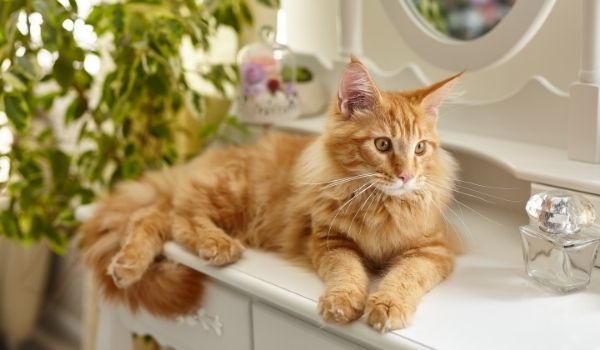
The official state cat of Maine, Maine Coons are one of the largest cat breeds in the world. As mentioned above, they can weigh up to 25 pounds and be perfectly healthy. They are among the slowest growing cat breeds, not reaching their full size until age 4.
Manx
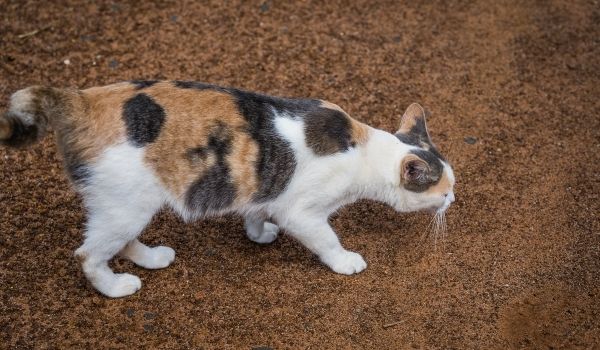
Marked as one of the world’s oldest cat breeds, with some feline fables listing them in the animals boarding Noah’s ark. Oldest or not, what is certain is that Manx cats can take up to 5 years to fully mature. However, they only need kitten food for the first year of their life. After that, you can consult your vet and make a balanced diet plan for your Manx cat.
Turkish Van

Nicknamed “The Swimming Cat,” Turkish Vans fall among the slowly growing cat breeds, often taking from 3 to 5 years to reach their full size. To make sure that the nutritional needs of your Turkish Van cat are being met, you will have to work with your vet and make an appropriate diet plan.
British Shorthair

While most British Shorthair cats reach their full size by their third birthday, some cats may keep growing until their fifth birthday celebration. However, after this, there won’t be any further growth. If your cat still seems to be gaining weight, you should get in touch with your vet and work out a custom-made diet plan to make sure she does not become a victim of obesity.
American Bobtail
Having a unique bobbed tail, American bobtail cats are very agile cats—they can take a leap up to six feet. These athletic cats take up to three years to reach their full size.
Ragdoll
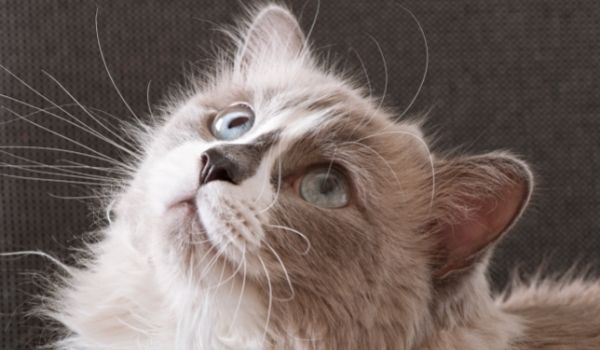
Did you know that one of Taylor Swift’s cats is a Ragdoll—Benjamin Button?
These cats reach adulthood almost by the age of one year. However, they may continue to grow until age 4. You should be very careful about them, as they may grow obese.
Siberian
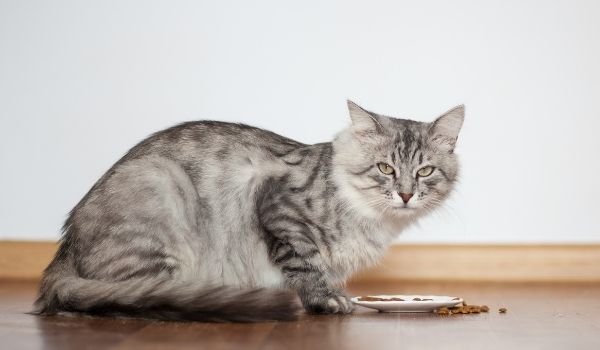
These medium-to-long-haired cat breeds may take up to 5 years to reach full physical maturity. This cat breed is at a greater risk of obesity. Therefore, you must provide them with a balanced diet and make sure they are getting ample exercise.
When Do Tabby Cats Stop Growing?
Tabby is a pattern and not a breed. Many cat breeds have tabby patterns. American Shorthair, American Bobtail, Abyssinian, American Wirehair, Egyptian Mau, and Manx are just a few of the many cat breeds that come in varying tabby patterns.
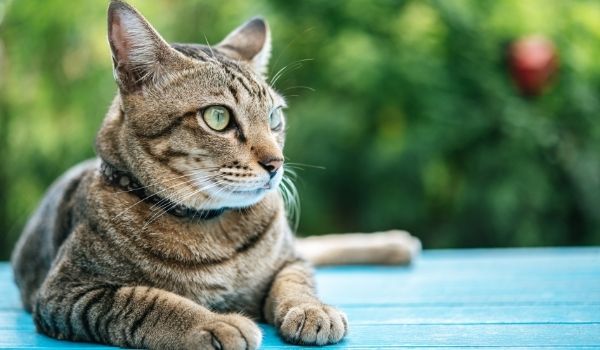
So to the question, ‘when do tabby cats stop growing?’ The tabby pattern of cats does not affect their growth. It is totally dependent on the breed of your tabby cat. So to know when you can expect your cat to stop growing, you will have to learn about your cat’s breed.
When Do Domestic Shorthair Cats Stop Growing?
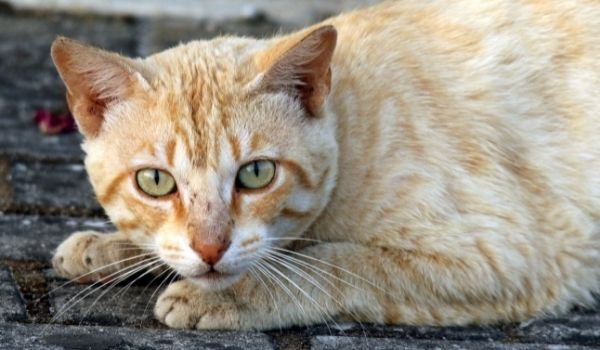
Just like the tabby cats, domestic shorthair is also not a cat breed. It is just a characteristic coat that is found in many different cat breeds. Like the tabby cats only share characteristic tabby patterns, domestic shorthair cats only share characteristic shorthair coats, and by no means do they belong to the same cat breed. So, to determine when your domestic shorthair cat will stop growing, you need to identify her breed first.
So, when do cats stop growing?
As the foregoing discussion shows, there is no one-size-fits-all answer to this. Depending on the cat’s breed, health, diet, and whether she is an indoor or outdoor cat, determine the age by which they will enter the adult club.
